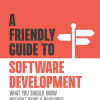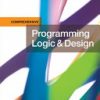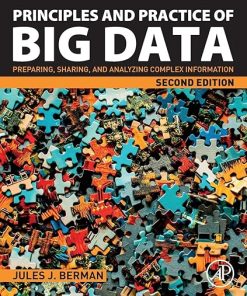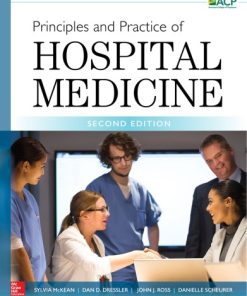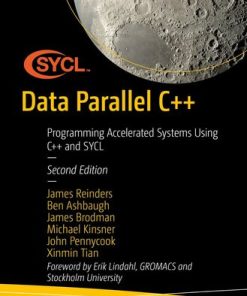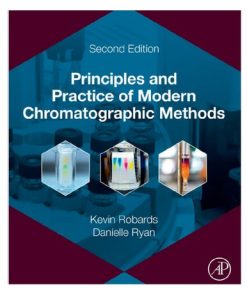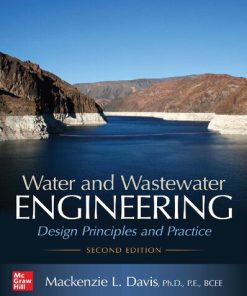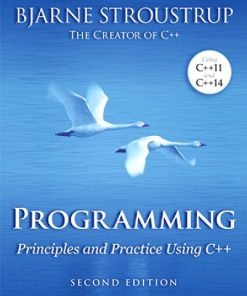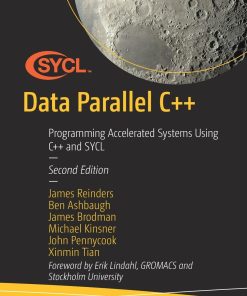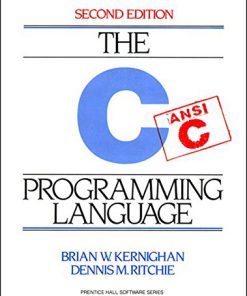Programming Principles and Practice Using 2nd Edition by Bjarne Stroustrup 0133796742 9780133796742
$50.00 Original price was: $50.00.$25.00Current price is: $25.00.
Programming: Principles and Practice Using 2nd Edition by Bjarne Stroustrup – Ebook PDF Instant Download/DeliveryISBN: 0133796742, 9780133796742
Full download Programming: Principles and Practice Using 2nd Edition after payment.
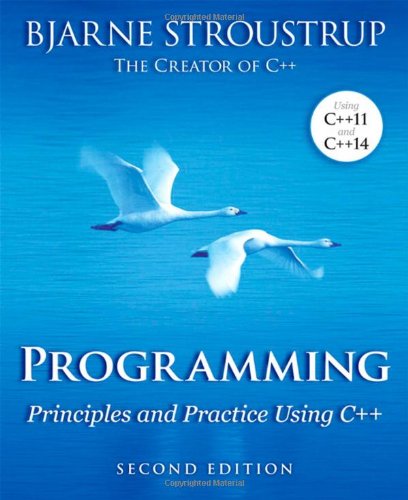
Product details:
ISBN-10 : 0133796742
ISBN-13 : 9780133796742
Author : Bjarne Stroustrup
An Introduction to Programming by the Inventor of C++ Preparation for Programming in the Real World The book assumes that you aim eventually to write non-trivial programs, whether for work in software development or in some other technical field. Focus on Fundamental Concepts and Techniques The book explains fundamental concepts and techniques in greater depth than traditional introductions. This approach will give you a solid foundation for writing useful, correct, maintainable, and efficient code. Programming with Today’s C++ (C++11 and C++14) The book is an introduction to programming in general, including object-oriented programming and generic programming. It is also a solid introduction to the C++ programming language, one of the most widely used languages for real-world software. The book presents modern C++ programming techniques from the start, introducing the C++ standard library and C++11 and C++14 features to simplify programming tasks. For Beginners—And Anyone Who Wants to Learn Something New The book is primarily designed for people who have never programmed before, and it has been tested with many thousands of first-year university students. It has also been extensively used for self-study. Also, practitioners and advanced students have gained new insight and guidance by seeing how a master approaches the elements of his art. Provides a Broad View The first half of the book covers a wide range of essential concepts, design and programming techniques, language features, and libraries. Those will enable you to write programs involving input, output, computation, and simple graphics. The second half explores more specialized topics (such as text processing, testing, and the C programming language) and provides abundant reference material. Source code and support supplements are available from the author’s website.
Programming: Principles and Practice Using 2nd Table of contents:
Chapter 0 Notes to the Reader
0.1 The structure of this book
0.1.1 General approach
0.1.2 Drills, exercises, etc.
0.1.3 What comes after this book?
0.2 A philosophy of teaching and learning
0.2.1 The order of topics
0.2.2 Programming and programming language
0.2.3 Portability
0.3 Programming and computer science
0.4 Creativity and problem solving
0.5 Request for feedback
0.6 References
0.7 Biographies
Bjarne Stroustrup
Lawrence “Pete” Petersen
Chapter 1 Computers, People, and Programming
1.1 Introduction
1.2 Software
1.3 People
1.4 Computer science
1.5 Computers are everywhere
1.5.1 Screens and no screens
1.5.2 Shipping
1.5.3 Telecommunications
1.5.4 Medicine
1.5.5 Information
1.5.6 A vertical view
1.5.7 So what?
1.6 Ideals for programmers
Part I The Basics
Chapter 2 Hello, World!
2.1 Programs
2.2 The classic first program
2.3 Compilation
2.4 Linking
2.5 Programming environments
Chapter 3 Objects, Types, and Values
3.1 Input
3.2 Variables
3.3 Input and type
3.4 Operations and operators
3.5 Assignment and initialization
3.5.1 An example: detect repeated words
3.6 Composite assignment operators
3.6.1 An example: find repeated words
3.7 Names
3.8 Types and objects
3.9 Type safety
3.9.1 Safe conversions
3.9.2 Unsafe conversions
Chapter 4 Computation
4.1 Computation
4.2 Objectives and tools
4.3 Expressions
4.3.1 Constant expressions
4.3.2 Operators
4.3.3 Conversions
4.4 Statements
4.4.1 Selection
4.4.2 Iteration
4.5 Functions
4.5.1 Why bother with functions?
4.5.2 Function declarations
4.6 vector
4.6.1 Traversing a vector
4.6.2 Growing a vector
4.6.3 A numeric example
4.6.4 A text example
4.7 Language features
Chapter 5 Errors
5.1 Introduction
5.2 Sources of errors
5.3 Compile-time errors
5.3.1 Syntax errors
5.3.2 Type errors
5.3.3 Non-errors
5.4 Link-time errors
5.5 Run-time errors
5.5.1 The caller deals with errors
5.5.2 The callee deals with errors
5.5.3 Error reporting
5.6 Exceptions
5.6.1 Bad arguments
5.6.2 Range errors
5.6.3 Bad input
5.6.4 Narrowing errors
5.7 Logic errors
5.8 Estimation
5.9 Debugging
5.9.1 Practical debug advice
5.10 Pre- and post-conditions
5.10.1 Post-conditions
5.11 Testing
Chapter 6 Writing a Program
6.1 A problem
6.2 Thinking about the problem
6.2.1 Stages of development
6.2.2 Strategy
6.3 Back to the calculator!
6.3.1 First attempt
6.3.2 Tokens
6.3.3 Implementing tokens
6.3.4 Using tokens
6.3.5 Back to the drawing board
6.4 Grammars
6.4.1 A detour: English grammar
6.4.2 Writing a grammar
6.5 Turning a grammar into code
6.5.1 Implementing grammar rules
6.5.2 Expressions
6.5.3 Terms
6.5.4 Primary expressions
6.6 Trying the first version
6.7 Trying the second version
6.8 Token streams
6.8.1 Implementing Token_stream
6.8.2 Reading tokens
6.8.3 Reading numbers
6.9 Program structure
Chapter 7 Completing a Program
7.1 Introduction
7.2 Input and output
7.3 Error handling
7.4 Negative numbers
7.5 Remainder: %
7.6 Cleaning up the code
7.6.1 Symbolic constants
7.6.2 Use of functions
7.6.3 Code layout
7.6.4 Commenting
7.7 Recovering from errors
7.8 Variables
7.8.1 Variables and definitions
7.8.2 Introducing names
7.8.3 Predefined names
7.8.4 Are we there yet?
Chapter 8 Technicalities: Functions, etc.
8.1 Technicalities
8.2 Declarations and definitions
8.2.1 Kinds of declarations
8.2.2 Variable and constant declarations
8.2.3 Default initialization
8.3 Header files
8.4 Scope
8.5 Function call and return
8.5.1 Declaring arguments and return type
8.5.2 Returning a value
8.5.3 Pass-by-value
8.5.4 Pass-by-const-reference
8.5.5 Pass-by-reference
8.5.6 Pass-by-value vs. pass-by-reference
8.5.7 Argument checking and conversion
8.5.8 Function call implementation
8.5.9 constexpr functions
8.6 Order of evaluation
8.6.1 Expression evaluation
8.6.2 Global initialization
8.7 Namespaces
8.7.1 using declarations and using directives
Chapter 9 Technicalities: Classes, etc.
9.1 User-defined types
9.2 Classes and members
9.3 Interface and implementation
9.4 Evolving a class
9.4.1 struct and functions
9.4.2 Member functions and constructors
9.4.3 Keep details private
9.4.4 Defining member functions
9.4.5 Referring to the current object
9.4.6 Reporting errors
9.5 Enumerations
9.5.1 “Plain” enumerations
9.6 Operator overloading
9.7 Class interfaces
9.7.1 Argument types
9.7.2 Copying
9.7.3 Default constructors
9.7.4 const member functions
9.7.5 Members and “helper functions”
9.8 The Date class
Part II Input and Output
Chapter 10 Input and Output Streams
10.1 Input and output
10.2 The I/O stream model
10.3 Files
10.4 Opening a file
10.5 Reading and writing a file
10.6 I/O error handling
10.7 Reading a single value
10.7.1 Breaking the problem into manageable parts
10.7.2 Separating dialog from function
10.8 User-defined output operators
10.9 User-defined input operators
10.10 A standard input loop
10.11 Reading a structured file
10.11.1 In-memory representation
10.11.2 Reading structured values
10.11.3 Changing representations
Chapter 11 Customizing Input and Output
11.1 Regularity and irregularity
11.2 Output formatting
11.2.1 Integer output
11.2.2 Integer input
11.2.3 Floating-point output
11.2.4 Precision
11.2.5 Fields
11.3 File opening and positioning
11.3.1 File open modes
11.3.2 Binary files
11.3.3 Positioning in files
11.4 String streams
11.5 Line-oriented input
11.6 Character classification
11.7 Using nonstandard separators
11.8 And there is so much more
Chapter 12 A Display Model
12.1 Why graphics?
12.2 A display model
12.3 A first example
12.4 Using a GUI library
12.5 Coordinates
12.6 Shapes
12.7 Using Shape primitives
12.7.1 Graphics headers and main
12.7.2 An almost blank window
12.7.3 Axis
12.7.4 Graphing a function
12.7.5 Polygons
12.7.6 Rectangles
12.7.7 Fill
12.7.8 Text
12.7.9 Images
12.7.10 And much more
12.8 Getting this to run
12.8.1 Source files
Chapter 13 Graphics Classes
13.1 Overview of graphics classes
13.2 Point and Line
13.3 Lines
13.4 Color
13.5 Line_style
13.6 Open_polyline
13.7 Closed_polyline
13.8 Polygon
13.9 Rectangle
13.10 Managing unnamed objects
13.11 Text
13.12 Circle
13.13 Ellipse
13.14 Marked_polyline
13.15 Marks
13.16 Mark
13.17 Images
Chapter 14 Graphics Class Design
14.1 Design principles
14.1.1 Types
14.1.2 Operations
14.1.3 Naming
14.1.4 Mutability
14.2 Shape
14.2.1 An abstract class
14.2.2 Access control
14.2.3 Drawing shapes
14.2.4 Copying and mutability
14.3 Base and derived classes
14.3.1 Object layout
14.3.2 Deriving classes and defining virtual functions
14.3.3 Overriding
14.3.4 Access
14.3.5 Pure virtual functions
14.4 Benefits of object-oriented programming
Chapter 15 Graphing Functions and Data
15.1 Introduction
15.2 Graphing simple functions
15.3 Function
15.3.1 Default Arguments
15.3.2 More examples
15.3.3 Lambda expressions
15.4 Axis
15.5 Approximation
15.6 Graphing data
15.6.1 Reading a file
15.6.2 General layout
15.6.3 Scaling data
15.6.4 Building the graph
Chapter 16 Graphical User Interfaces
16.1 User interface alternatives
16.2 The “Next” button
16.3 A simple window
16.3.1 A callback function
16.3.2 A wait loop
16.3.3 A lambda expression as a callback
16.4 Button and other Widgets
16.4.1 Widgets
16.4.2 Buttons
16.4.3 In_box and Out_box
16.4.4 Menus
16.5 An example
16.6 Control inversion
16.7 Adding a menu
16.8 Debugging GUI code
Part III Data and Algorithms
Chapter 17 Vector and Free Store
17.1 Introduction
17.2 vector basics
17.3 Memory, addresses, and pointers
17.3.1 The sizeof operator
17.4 Free store and pointers
17.4.1 Free-store allocation
17.4.2 Access through pointers
17.4.3 Ranges
17.4.4 Initialization
17.4.5 The null pointer
17.4.6 Free-store deallocation
17.5 Destructors
17.5.1 Generated destructors
17.5.2 Destructors and free store
17.6 Access to elements
17.7 Pointers to class objects
17.8 Messing with types: void* and casts
17.9 Pointers and references
17.9.1 Pointer and reference parameters
17.9.2 Pointers, references, and inheritance
17.9.3 An example: lists
17.9.4 List operations
17.9.5 List use
17.10 The this pointer
17.10.1 More link use
Chapter 18 Vectors and Arrays
18.1 Introduction
18.2 Initialization
18.3 Copying
18.3.1 Copy constructors
18.3.2 Copy assignments
18.3.3 Copy terminology
18.3.4 Moving
18.4 Essential operations
18.4.1 Explicit constructors
18.4.2 Debugging constructors and destructors
18.5 Access to vector elements
18.5.1 Overloading on const
18.6 Arrays
18.6.1 Pointers to array elements
18.6.2 Pointers and arrays
18.6.3 Array initialization
18.6.4 Pointer problems
18.7 Examples: palindrome
18.7.1 Palindromes using string
18.7.2 Palindromes using arrays
18.7.3 Palindromes using pointers
Chapter 19 Vector, Templates, and Exceptions
19.1 The problems
19.2 Changing size
19.2.1 Representation
19.2.2 reserve and capacity
19.2.3 resize
19.2.4 push_back
19.2.5 Assignment
19.2.6 Our vector so far
19.3 Templates
19.3.1 Types as template parameters
19.3.2 Generic programming
19.3.3 Concepts
19.3.4 Containers and inheritance
19.3.5 Integers as template parameters
19.3.6 Template argument deduction
19.3.7 Generalizing vector
19.4 Range checking and exceptions
19.4.1 An aside: design considerations
19.4.2 A confession: macros
19.5 Resources and exceptions
19.5.1 Potential resource management problems
19.5.2 Resource acquisition is initialization
19.5.3 Guarantees
19.5.4 unique_ptr
19.5.5 Return by moving
19.5.6 RAII for vector
Chapter 20 Containers and Iterators
20.1 Storing and processing data
20.1.1 Working with data
20.1.2 Generalizing code
20.2 STL ideals
20.3 Sequences and iterators
20.3.1 Back to the example
20.4 Linked lists
20.4.1 List operations
20.4.2 Iteration
20.5 Generalizing vector yet again
20.5.1 Container traversal
20.5.2 auto
20.6 An example: a simple text editor
20.6.1 Lines
20.6.2 Iteration
20.7 vector, list, and string
20.7.1 insert and erase
20.8 Adapting our vector to the STL
20.9 Adapting built-in arrays to the STL
20.10 Container overview
20.10.1 Iterator categories
Chapter 21 Algorithms and Maps
21.1 Standard library algorithms
21.2 The simplest algorithm: find()
21.2.1 Some generic uses
21.3 The general search: find_if()
21.4 Function objects
21.4.1 An abstract view of function objects
21.4.2 Predicates on class members
21.4.3 Lambda expressions
21.5 Numerical algorithms
21.5.1 Accumulate
21.5.2 Generalizing accumulate()
21.5.3 Inner product
21.5.4 Generalizing inner_product()
21.6 Associative containers
21.6.1 map
21.6.2 map overview
21.6.3 Another map example
21.6.4 unordered_map
21.6.5 set
21.7 Copying
21.7.1 Copy
21.7.2 Stream iterators
21.7.3 Using a set to keep order
21.7.4 copy_if
21.8 Sorting and searching
21.9 Container algorithms
Part IV Broadening the View
Chapter 22 Ideals and History
22.1 History, ideals, and professionalism
22.1.1 Programming language aims and philosophies
22.1.2 Programming ideals
22.1.3 Styles/paradigms
22.2 Programming language history overview
22.2.1 The earliest languages
22.2.2 The roots of modern languages
22.2.3 The Algol family
22.2.4 Simula
22.2.5 C
22.2.6 C++
22.2.7 Today
22.2.8 Information sources
Chapter 23 Text Manipulation
23.1 Text
23.2 Strings
23.3 I/O streams
23.4 Maps
23.4.1 Implementation details
23.5 A problem
23.6 The idea of regular expressions
23.6.1 Raw string literals
23.7 Searching with regular expressions
23.8 Regular expression syntax
23.8.1 Characters and special characters
23.8.2 Character classes
23.8.3 Repeats
23.8.4 Grouping
23.8.5 Alternation
23.8.6 Character sets and ranges
23.8.7 Regular expression errors
23.9 Matching with regular expressions
23.10 References
Chapter 24 Numerics
24.1 Introduction
24.2 Size, precision, and overflow
24.2.1 Numeric limits
24.3 Arrays
24.4 C-style multidimensional arrays
24.5 The Matrix library
24.5.1 Dimensions and access
24.5.2 1D Matrix
24.5.3 2D Matrix
24.5.4 Matrix I/O
24.5.5 3D Matrix
24.6 An example: solving linear equations
24.6.1 Classical Gaussian elimination
24.6.2 Pivoting
24.6.3 Testing
24.7 Random numbers
24.8 The standard mathematical functions
24.9 Complex numbers
24.10 References
Chapter 25 Embedded Systems Programming
25.1 Embedded systems
25.2 Basic concepts
25.2.1 Predictability
25.2.2 Ideals
25.2.3 Living with failure
25.3 Memory management
25.3.1 Free-store problems
25.3.2 Alternatives to the general free store
25.3.3 Pool example
25.3.4 Stack example
25.4 Addresses, pointers, and arrays
25.4.1 Unchecked conversions
25.4.2 A problem: dysfunctional interfaces
25.4.3 A solution: an interface class
25.4.4 Inheritance and containers
25.5 Bits, bytes, and words
25.5.1 Bits and bit operations
25.5.2 bitset
25.5.3 Signed and unsigned
25.5.4 Bit manipulation
25.5.5 Bitfields
25.5.6 An example: simple encryption
25.6 Coding standards
25.6.1 What should a coding standard be?
25.6.2 Sample rules
25.6.3 Real coding standards
Chapter 26 Testing
26.1 What we want
26.1.1 Caveat
26.2 Proofs
26.3 Testing
26.3.1 Regression tests
26.3.2 Unit tests
26.3.3 Algorithms and non-algorithms
26.3.4 System tests
26.3.5 Finding assumptions that do not hold
26.4 Design for testing
26.5 Debugging
26.6 Performance
26.6.1 Timing
26.7 References
Chapter 27 The C Programming Language
27.1 C and C++: siblings
27.1.1 C/C++ compatibility
27.1.2 C++ features missing from C
27.1.3 The C standard library
27.2 Functions
27.2.1 No function name overloading
27.2.2 Function argument type checking
27.2.3 Function definitions
27.2.4 Calling C from C++ and C++ from C
27.2.5 Pointers to functions
27.3 Minor language differences
27.3.1 struct tag namespace
27.3.2 Keywords
27.3.3 Definitions
27.3.4 C-style casts
27.3.5 Conversion of void*
27.3.6 enum
27.3.7 Namespaces
27.4 Free store
27.5 C-style strings
27.5.1 C-style strings and const
27.5.2 Byte operations
27.5.3 An example: strcpy()
27.5.4 A style issue
27.6 Input/output: stdio
27.6.1 Output
27.6.2 Input
27.6.3 Files
27.7 Constants and macros
27.8 Macros
27.8.1 Function-like macros
27.8.2 Syntax macros
27.8.3 Conditional compilation
27.9 An example: intrusive containers
Part V Appendices
People also search for Programming: Principles and Practice Using 2nd:
borrow programming principles and practice using c++
programming principles and practice using c++ 3rd edition pdf
programming principles and practice using c++ 3rd edition
programming principles and practice using c++ 4th edition pdf
programming principles and practice using c++ for complete beginners
Tags: Programming, Principles, Practice Using, Bjarne Stroustrup
You may also like…
Uncategorized
Computers - Applications & Software
Computers - Programming
Data Parallel C++ : Programming Accelerated Systems Using C++ and SYCL
Technique - Water Treatment
Computers & Technology
Programming: Principles and Practice Using C++ 2nd Edition, (Ebook PDF)
Computers - Programming


